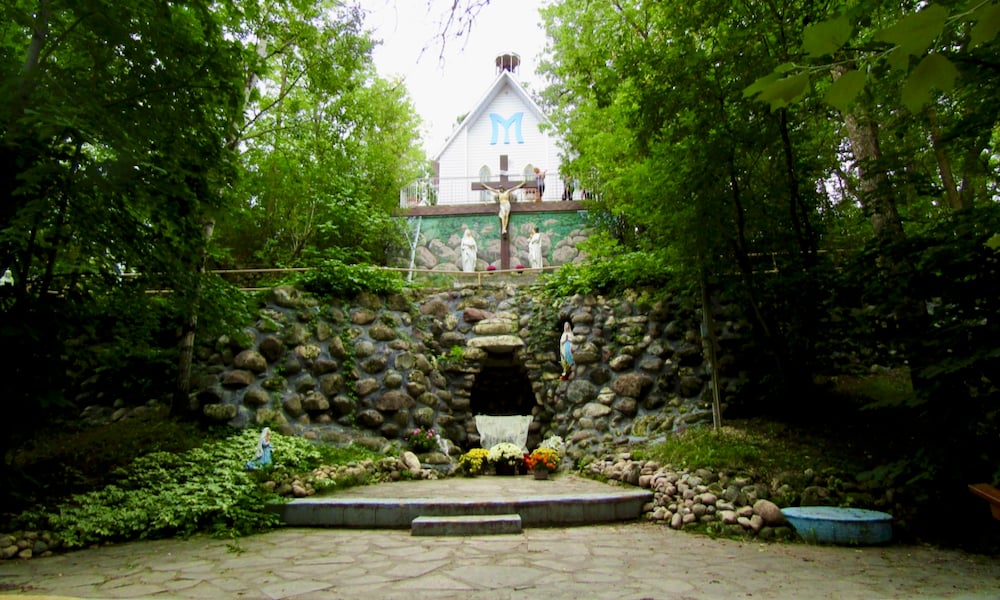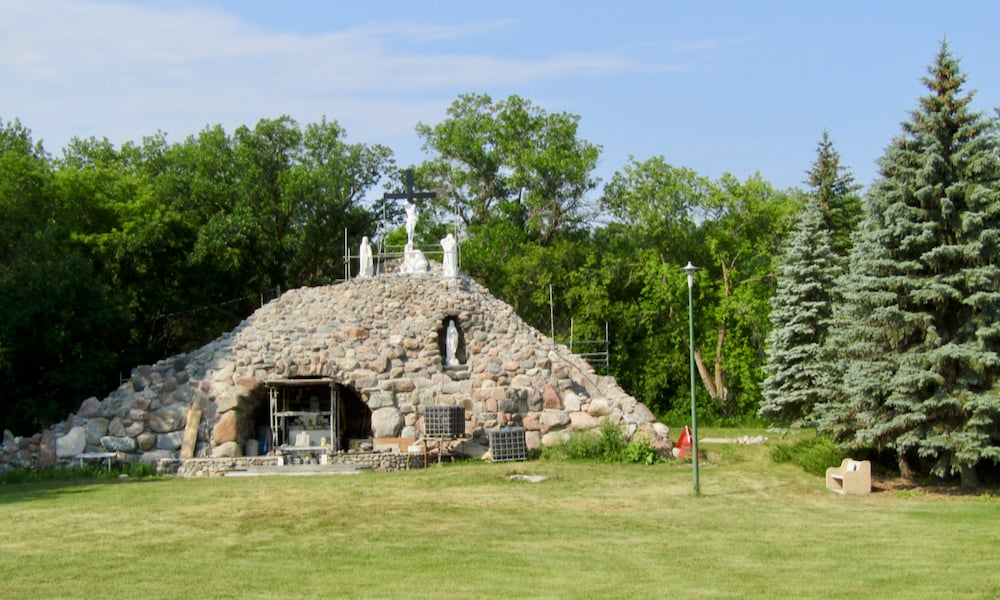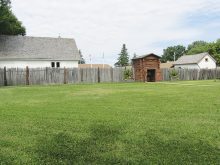Looking for a new type of day trip this fall? Take a drive to visit one or more of the grottos found at some of our rural churches and enjoy the coloured leaves while you do so. A short walk around the grounds can be just what you need for an interesting day.
The largest and most impressive grotto in Manitoba is probably the Grotto of our Lady of Lourdes at Cooks Creek. It is built to resemble a ruined castle with ‘caves’ in the centre that contain the Stations of the Cross. But there are many other smaller grottos to visit in our province. Most of these are built to resemble the famous Grotto of Lourdes in France, but vary in size and construction materials.
A large one is located at St. Malo in southeastern Manitoba. Situated on the outskirts of the village, not far from St. Malo Provincial Park, it is a worthy road trip venue with a long, interesting history.

Its construction began in 1896. The parish priest, Father Abel Noret, believed the spot was similar to the famous Lourdes Grotto. At that time, the site was wooded and remote, with a steep bank down to the Rat River. Father Noret convinced his parishioners that this spot was ideal. As a first step, volunteers removed brush, filled in hollows and built a small chapel on the riverbank.
By 1902 the chapel was replaced. An actual grotto with stone walls and a niche for a Madonna statue was constructed with local fieldstones. By 1906, when Archbishop Langevin of St. Boniface blessed a new chapel there, the spot had become a place of pilgrimage.
Over the years further changes led to a larger canopy over the altar and more seating space in front.
Read Also

Cooking cabbage deserves revival
Cabbage recipes don’t need to be boring. Rediscover the taste, diverse uses and local Prairie food traditions of this leafy green
To facilitate that, the Rat River actually had to be diverted to a new channel. As well, semi-circular ramps were built leading downward from the chapel to the grotto. Today, pews there can hold several hundred people. Devotees can also follow the Stations of the Cross erected around the tranquil site.
Farther west in Manitoba, another grotto worth a visit is the one at Polonia, in a beautiful little valley northwest of Neepawa on Road 265. This area was originally known as Hun’s Valley and was settled by 17 Eastern European families in 1885. The grotto is located behind St. Elizabeth of Hungary Church which was built in 1902. Because of its valley location, this is a particularly scenic spot when fall foliage is in full splendour. Up the hill to the west is the Polonia Cemetery, with another great view.
The grotto on the south side of Ste. Rose du Lac is one that travellers might visit. Plans for this grotto began in 1955 by Father Isaie Desautels, as a means of memorializing the original Lourdes Grotto. Parishioners provided stone and volunteer labour but construction was delayed by the size of the project and the burning of the Ste. Rose Church. Pilgrimages finally began there in 1962. By the early 2000s, the Ste. Rose grotto was in need of repairs and a Grotto Restoration Committee began fundraising. Renovations appear to be ongoing.

Smaller grottos can be found in several other towns. One is northwest of Dauphin at Trembowla Cross of Freedom Historical Site. This grotto is newer, built in 1998 to celebrate the 100th anniversary of St. Michael’s Ukrainian Catholic Church. It holds a statue of Mary and the Christ Child that came originally from the Polonia Church.
In south-central Manitoba, a small grotto is located on the grounds at St. Alphonse Roman Catholic Church a Manitoba historical site. If you stop there, explore the grounds and cemetery. From the back of the cemetery, look for the St. Alphonse Centennial Cross a couple of kilometres away on Elodies Hill.
Another small, rural grotto is at Notre Dame de Lourdes. This one was dedicated in 1954, fulfilling a promise made by Sister Marie Joseph in thanks to the Virgin Mary for protecting the village’s children from polio, during an epidemic in 1946-47. School students, parishioners and other religious officials assisted in having it built.
Not far away is another grotto, in the village of St. Claude. It is located on property that formerly belonged to the Sisters of the Cross Convent. This grotto was built by former students in appreciation to Sister Marie Adelard for 25 years of religious life.
Take time this autumn to explore our province. With a little planning, you might reach two or three of these sites in one road trip.















